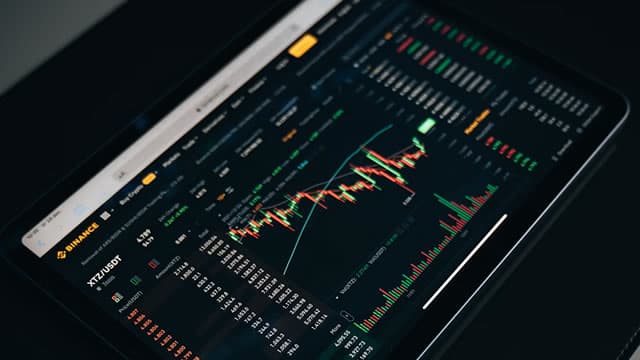SPY: Why The Real Correction May Start After Q2

Summary
The SPY's 27% rally, fueled by lowered Q2 earnings expectations and tariff pauses, may be a temporary phenomenon. While Q2 saw 'easy beats' due to revised estimates, underlying consumer demand weakness is expected to emerge post-Q2. Factors like inflation, rising interest rates, and depleting savings could trigger a significant market correction. Investors should re-evaluate growth expectations, focus on quality stocks, diversify, and closely monitor economic data to prepare for potential shifts in market dynamics.
SPY: Why The Real Correction May Start After Q2
Market sentiment has undergone a dramatic shift in recent months, transitioning rapidly from widespread recession fears to a surprising wave of optimism. This pivot has fueled a significant 27% rally in the SPDR S&P 500 ETF Trust (SPY), a benchmark for the broader U.S. equity market. Several factors have contributed to this rebound, including a notable lowering of earnings expectations for the second quarter and strategic pauses in tariff implementations, which provided a temporary reprieve for corporate margins.
The Q2 Earnings Mirage: Lowered Bars and Easier Beats
A critical component of the recent market rally has been the significant downward revisions in consensus earnings estimates for Q2. Analysts, anticipating a slowdown, proactively lowered the bar for corporate performance. This strategy effectively created an environment where companies could more easily 'beat' these lowered expectations, even if actual revenue growth remained subdued or declined. These 'earnings beats,' while technically positive, may not reflect underlying strength in consumer demand or robust economic activity. Instead, they could be indicative of a market that has become adept at managing expectations to generate positive headlines.
Emerging Consumer Demand Weakness Post-Q2
While the market has celebrated these Q2 'beats,' a more concerning trend may be brewing beneath the surface: the potential for real consumer demand weakness to emerge more prominently after the second quarter. Several indicators suggest that the resilience of the American consumer, a cornerstone of economic growth, might be waning. High inflation, even if moderating, has eroded purchasing power. Rising interest rates are making borrowing more expensive, impacting everything from mortgages to credit card debt. Furthermore, the depletion of excess savings accumulated during the pandemic, coupled with a tightening labor market, could lead to a slowdown in discretionary spending.
Key Economic Headwinds to Watch:
- Inflationary Pressures: Persistent elevated prices continue to strain household budgets, forcing consumers to prioritize essential spending over discretionary purchases.
- Rising Interest Rates: The Federal Reserve's aggressive rate hikes are filtering through the economy, increasing the cost of capital for businesses and consumers alike, potentially dampening investment and consumption.
- Labor Market Dynamics: While still strong, signs of cooling in the labor market, such as a slight uptick in unemployment claims or a slowdown in wage growth, could signal reduced consumer confidence and spending capacity.
- Credit Card Debt & Delinquencies: An increase in consumer debt levels and rising delinquency rates could indicate financial stress among households, limiting future spending.
Investment Implications and Forward-Looking Strategy
For investors, the current market environment presents a complex picture. The Q2 earnings season, while seemingly positive on the surface, might be masking deeper economic vulnerabilities. The 'easy beats' of Q2 could give way to more challenging comparisons in Q3 and Q4 as the impact of monetary tightening fully materializes and consumer spending potentially decelerates. This could lead to a more significant market correction than what has been observed so far.
Actionable Insights for Investors:
- Re-evaluate Growth Expectations: Investors should temper their growth expectations for the latter half of the year, focusing on companies with strong balance sheets and resilient business models.
- Focus on Quality and Value: In an environment of potential economic slowdown, companies with consistent free cash flow, low debt, and sustainable competitive advantages may outperform.
- Diversify Portfolios: Consider diversifying beyond growth-oriented sectors into more defensive areas like utilities, consumer staples, and healthcare, which tend to be less sensitive to economic cycles.
- Monitor Economic Data Closely: Pay close attention to key economic indicators such as retail sales, consumer confidence, unemployment figures, and inflation reports for early signs of a significant shift in consumer behavior.
- Consider Hedging Strategies: For those concerned about downside risk, options strategies or inverse ETFs could be considered, though these carry their own risks and are not suitable for all investors.
Conclusion: Preparing for a Potential Post-Q2 Reality Check
The current SPY rally, while impressive, may be built on a foundation of lowered expectations rather than robust economic fundamentals. As the market moves beyond the Q2 earnings season, the true test of consumer resilience and corporate profitability will emerge. Investors who prepare for a potential shift in market dynamics, characterized by a more challenging economic environment and a potential correction, may be better positioned to navigate the uncertainties ahead. The 'real correction' might not be a question of if, but when, and the post-Q2 period could be the catalyst.